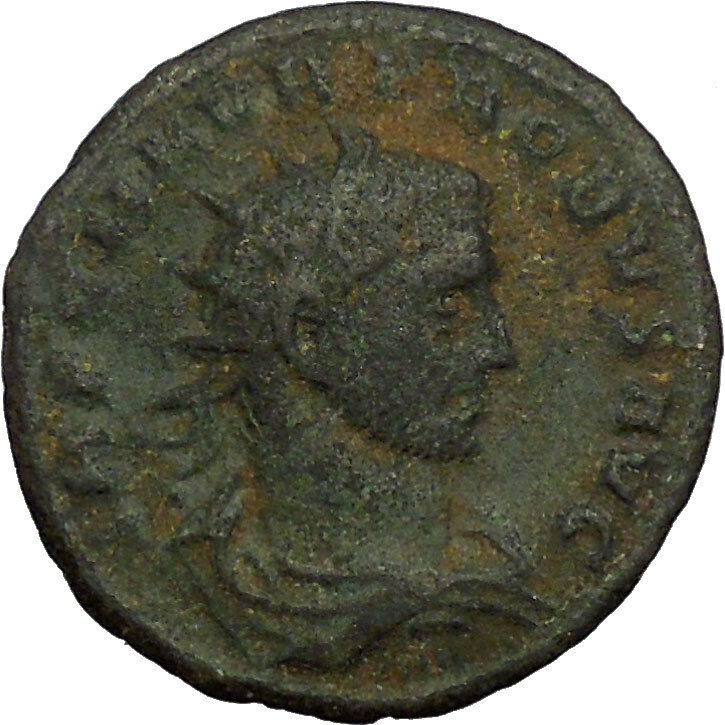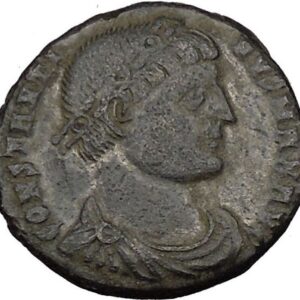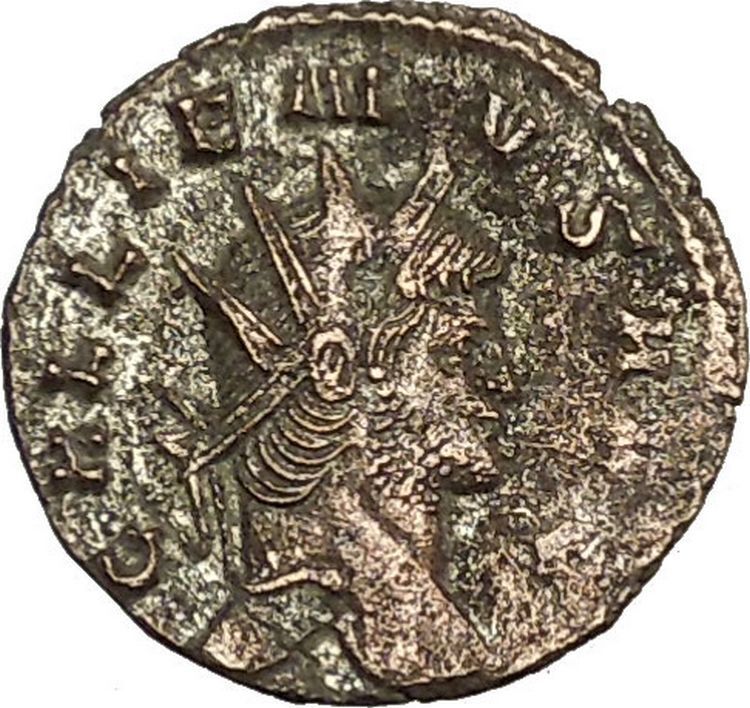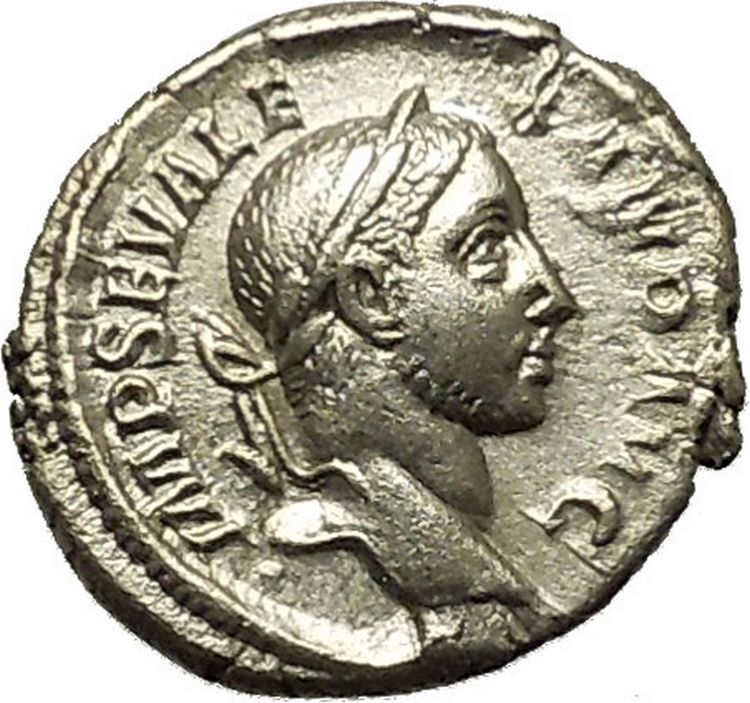|
Valentinian II
–
Roman Emperor
: 375-392 A.D. –
Bronze AE4 12mm (1.16 grams) Struck circa 375-392 A.D.
DNVALENTINIANVSPFAVG – Diademed, draped and cuirassed bust right.
Wreath, VOT/X/MVLT/XX within.
You are bidding on the exact item pictured,
provided with a Certificate of Authenticity and Lifetime Guarantee of
Authenticity.
Flavius Valentinianus (371 – 15 May 392), known usually by his
anglicised
name, Valentinian II, was a
Roman Emperor
from 375 to 392.
//
 Early Early
Life and Accession (371–375)
Flavius Valentinianus was born to Emperor
Valentinian I
and his second wife,
Justina
. He was the half-brother of Valentinian’s other son,
Gratian
, who
had shared the imperial title with his father since 367. He had three sisters
Galla
, Grata and Justa. The elder Valentinian died on campaign in Pannonia
in 375. Neither Gratian (then in Trier) nor his uncle Valens (emperor for the
East) were consulted by the army commanders on the scene. Instead of merely
acknowledging Gratian as his father’s successor, Valentinian I’s generals
acclaimed the four-year old boy
augustus
on 22 November 375. The army may have been uneasy about
Gratian’s lack of military ability, and so raised a boy who would not
immediately aspire to military command.
Reign
from Milan (375–387)
Gratian, forced to accommodate the generals who supported his half-brother,
governed the trans-alpine provinces (including
Gaul,
Hispania
,
and Britain
), while Italy
, part of
Illyricum
, and
Africa
were under the rule of Valentinian. In 378, their uncle, the Emperor
Valens
, was
killed in battle with the
Goths
at
Adrianople
, and Gratian invited the general
Theodosius
to be emperor in the
East
. As a child, Valentinian II was under the influence of his
Arian
mother, the Empress Justina, and the imperial court at
Milan
, an
influence contested by the
Catholic
bishop
of
Milan, Ambrose
.
Justina used her influence over her young son to oppose the Catholic party
which was championed by Ambrose. In 385 Ambrose, backed by Milan’s populace,
refused an imperial request to hand over the
Portian basilica
for the use of Arian troops. In 386 Justina and Valentinian
received the Arian bishop
Auxentius
, and Ambrose was again ordered to hand over a church in Milan for
Arian usage. Ambrose and his congregation barricaded themselves inside the
church, and the imperial order was rescinded.
Magnus Maximus
used the emperor’s heterodoxy against him, and even his
eventual protector, Theodosius, cast aspersions on his Arianism. Valentinian
also tried to restrain the despoiling of pagan temples in
Rome. Buoyed by
this instruction, the pagan
senators
, led by
Aurelius Symmachus
, the
Prefect of Rome
, petitioned in 384 for the restoration of the
Altar of Victory
in the
Senate
House
, which had been removed by Gratian in 382. Valentinian, at the
insistence of Ambrose, refused the request and, in so doing, rejected the
traditions and rituals of pagan Rome to which Symmachus had appealed.
In 383, Magnus Maximus, commander of the armies in Britain, declared himself
Emperor and established himself in Gaul and Hispania. Gratian died while fleeing
him. For a time the court of Valentinian, through the mediation of Ambrose, came
to an accommodation with the usurper, and Theodosius recognized Maximus as
co-emperor of the
West
. However, in 386 or 387, Maximus crossed the
Alps into the
Po
valley and threatened Milan. Valentinian II and Justina fled to
Theodosius in
Thessalonica
. The latter came to an agreement, cemented by his marriage to
Valentinian’s sister
Galla
, to restore the young emperor in the West. In 388, Theodosius marched
west and defeated Maximus. Although he was to appoint both of his sons emperor (Arcadius
in 383, Honorius
in 393), Theodosius remained loyal to the dynasty of Valentinian I.
After the defeat of Maximus, Theodosius remained in Milan until 391.
Valentinian took no part in Theodosius’
triumphal celebrations
over Maximus. Valentinian and his court were
installed at
Vienne
in Gaul, while Theodoisus appointed key administrators in the West,
and had coins minted which implied his guardianship over the 17 year old.
Justina had already died, and Vienne was far away from the influence of Ambrose.
Theodosius’ trusted general, the
Frank
Arbogast
, was appointed
magister militum
for the Western provinces (bar Africa) and guardian of
Valentinian. Acting in the name of Valentinian, Arbogast was actually
subordinate only to Theodosius.
While the general campaigned successfully on the Rhine, the young emperor
remained at Vienne, in contrast to his warrior father and his older brother, who
had campaigned at his age. Arbogast’s domination over the emperor was
considerable, and the general even murdered
Harmonius
, a friend of Valentinian suspected of taking bribes, in the
emperor’s presence.
The crisis reached a peak when Arbogast prohibited the emperor from leading
the Gallic armies into Italy to oppose a barbarian threat. Valentinian, in
response, formally dismissed Arbogast. The latter ignored the order, publically
tearing it up and arguing that Valentinian had not appointed him in the first
place. The reality of where the power lay was openly displayed. Valentinian
wrote to Theodosius and Ambrose complaining of his subordination to his general.
In explicit rejection of his earlier Arianism, he invited Ambrose to come to
Vienne to baptize
him.
However, on 15 May 392, Valentinian was found hanged in his residence in
Vienne. Arbogast maintained that the emperor’s death was suicide. While our main
source, Zosimus
writing in the early sixth century from Constantinople, states that the Frank
had Valentinian murdered,
ancient authorities are divided in their opinion.
The young man’s body was conveyed in ceremony to Milan for burial by Ambrose,
mourned by his sisters Justa and Grata. The bishop’s eulogy is the only
contemporary Western source for Valentinian’s death.
It is ambiguous on the question of the emperor’s death, which is not surprising,
as Ambrose represents him as a model of Christian virtue. Suicide, not murder,
would make Ambrose dissemble on this key question.
At first Arbogast recognized Theodosius’s son Arcadius as emperor in the
West, seemingly surprised by his charge’s death.
After three months, during which he had no communication from Theodosius,
Arbogast selected an imperial official,
Eugenius
,
as emperor. Theodosius initially tolerated this regime but, in January 393,
elevated the eight year old Honorius as augustus to succeed Valentinian
II. Civil war ensued and, in 394, Theodosius defeated Eugenius and Arbogast.
Significance
Valentinian himself seems to have exercised no real authority, and was a
figurehead for various powerful interests: his mother, his co-emperors, and
powerful generals. Since the
Crisis of the Third CenturyDiocletian
and his collegiate system. While
Constantine
and his sons had been strong military figures, they had also
re-established the practice of hereditary succession, adopted by Valentinian I.
The obvious flaw in these two competing requirements came in the reign of
Valentinian II, a child.
His reign was a harbinger of the fifth century, when children or nonentities,
reigning as emperors, were controlled by powerful generals and officials.
A laurel wreath is a circular
wreath
made of interlocking branches and leaves
of the
bay laurel
(Laurus nobilis), an aromatic
broadleaf evergreen, or later from spineless butcher’s broom (Ruscus
hypoglossum) or cherry laurel (Prunus
laurocerasus). In
Greek mythology
,
Apollo
is represented wearing a laurel wreath
on his head. In
ancient Greece
wreaths were awarded to victors,
both in athletic competitions, including the ancient
Olympics
made of wild olive-tree know n n
as “kotinos“
(κότινος),[1]
(sc. at
Olympia
) and in poetic meets; in
Rome
they were symbols of martial victory,
crowning a successful commander during his
triumph
. Whereas ancient laurel wreaths are
most often depicted as a
horseshoe
shape, modern versions are usually
complete rings.
In common modern idiomatic
usage it refers to a victory. The
expression “resting on one’s laurels” refers to someone relying entirely on
long-past successes for continued fame or recognition, where to “look to one’s
laurels” means to be careful of losing rank to competition.
Academic use
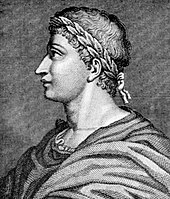
Ovid
with laurel wreath, common in
poets.
In some countries the laurel wreath is used as symbol of the
master’s degree
. The wreath is given to young
masters in the
graduation ceremony
of the university. The word
“Laureate”
in ‘poet
laureate‘ refers to being signified by the laurel wreath. The
medieval Florentine poet and philosopher
Dante Alighieri
,[dubious
–
discuss
] a graduate of the
Sicilian School
, is often represented in
paintings and sculpture wearing a laurel wreath.
Laureato[3]
is the term used in Italy
to refer to any graduated student. In
some italian regions (Veneto,
Friuli-Venezia Giulia
and
Trentino
), right after the graduation ceremony
(in Italian: laurea), the student receives a laurel wreath and is allowed
to wear it for the rest of the day. This tradition was born in the
University of Padua
and since the end of the
19th century is common to all
northeastern Italian
universities.
At
Connecticut College
in the United States,
members of the junior class carry a laurel
chain
, which the seniors pass through during
commencement. It represents nature and the continuation of life from year to
year. Immediately following commencement, the junior girls write out with the
laurels their class year, symbolizing they have officially become seniors and
the cycle will repeat itself the following spring.
At
Mount Holyoke College
in
South Hadley, Massachusetts
, United States,
laurel has been a fixture of
commencement
traditions since 1900, when
graduating students carried or wore laurel wreaths. In 1902, the chain of
mountain laurel
was introduced; since then,
tradition has been for seniors to march across campus, carrying and linked by
the chain. The mountain laurel represents the
bay laurel
used by the
Romans
in wreaths and crowns of honor.[4]
At Reed College
in
Portland, Oregon
, United States, members of the
senior class receive laurel wreaths upon submitting their senior
thesis
in May. The tradition stems from the use
of laurel wreaths in athletic competitions; the seniors have “crossed the finish
line,” so to speak.
At
St. Mark’s School
in
Southborough, Massachusetts
, students who
successfully complete three years of one classical language and two of the other
earn the distinction of the Classics Diploma and the honor of wearing a laurel
wreath on Prize Day.
In Sweden
, those receiving a Doctorate or an
Honorary Doctorate
at the Faculty of Philosophy
(meaning Philosophy, Languages, Arts, History and Social Sciences), receive a
laurel wreath during the ceremony of conferral of the degree.
Architectural and decorative arts motif

“Victory, A Knight Being Crowned With A Laurel Wreath” by
Frank Dicksee
.
The laurel wreath is a common motif in
architecture
,
furniture
, and
textiles
. The laurel wreath is seen carved in
the stone and decorative plaster works of
Robert Adam
, and in
Federal
,
Regency
,
Directoire
, and
Beaux-Arts
periods of architecture. In
decorative arts, especially during the
Empire period
, the laurel wreath is seen woven
in textiles, inlaid in marquetry, and applied to furniture in the form of gilded
brass mounts.
Alfa Romeo
added a laurel wreath to their
logo after they won the inaugural Automobile World Championship in
1925 with the
P2
racing car.
|






 n
n


